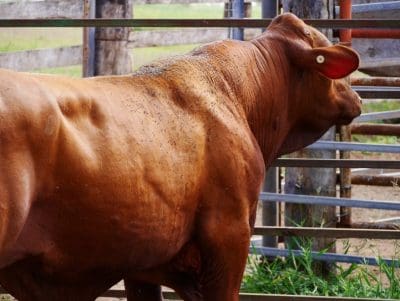BEEF producers in northern Australia have been advised to urgently review their buffalo fly control program following the recent de-registration of several products containing the active ingredient, diazinon.
Following a lengthy review and industry consultation, the Australian Pesticides and Veterinary Medicines Authority is no longer satisfied that some registered formulations containing diazinon meet its strict safety, trade and labelling criteria.
 Affected products can continue to be supplied and used as per the label directions until 9 September 2025. Manufacturers are no longer producing products containing diazinon, meaning once current supply held in storage is exhausted, it will no longer be available.
Affected products can continue to be supplied and used as per the label directions until 9 September 2025. Manufacturers are no longer producing products containing diazinon, meaning once current supply held in storage is exhausted, it will no longer be available.
After 9 September next year, it will be an offence to possess, have custody of, or to use any deregistered product containing diazinon.
A number of lice, blowfly, nuisance fly and buffalo fly treatments used in the cattle and sheep industries are affected by the announcement.
They include Co-Ral Plus and Patriot insecticidal ear tags for cattle, which are marketed by animal health company, Elanco.
Elanco brand manager for cattle products, Kim Krilich, said the de-registration of insecticidal ear tags containing diazinon would have a significant impact on buffalo fly control programs.
“While selective breeding and non-chemical control methods can help to reduce fly burdens, the strategic use of chemical treatments remains the most effective way to manage buffalo flies,” she said.
“The objective is to prevent the establishment of large populations and then to manage the fly population at a level that doesn’t negatively impact animal health and productivity.
“A knockdown treatment should be applied early in the fly season – say October or November – to suppress the emerging fly population.
“This should be followed by the administration of an insecticidal ear tag to provide residual protection against flies during the peak season.
“A second knockdown treatment may be required at the end of the season in March or April, which will help to minimise the size of the ‘overwintering’ fly larvae population.”
Until now, producers have had access to insecticidal ear tags with three different modes of action – organophosphates (OPs), synthetic pyrethroids (SPs) and macrocyclic lactones (MLs).
Co-Ral Plus and Patriot both contain diazinon, a member of the organophosphate chemical family.
“It’s important to implement a rotation program utilising at least three different modes of action to prolong the efficacy of all effective chemistry,” Ms Krilich said.
“This is the last season producers will be able to use ear tags containing diazinon, so producers should make the best use of this chemistry while it is still available.
“After this time, producers will need to incorporate other application methods, such as back-rubbers or oversprays, to maintain OPs as part of their rotation program.
“Regardless of which ear tag a cattle producer selects, they need to make sure they apply a different mode of action for the shoulder season treatments,” Ms Krilich said.
“Likewise, make sure all ear tags are removed at the end of their pay-out period to ensure flies are not exposed to sub-lethal concentrations.”
Buffalo fly industry’s No 1 parasite challenge
Buffalo fly (Haematobia irritans exigua) is the most economically significant parasite to the Australian beef industry, costing the industry more than $170 million per year in lost production, prevention, and treatment costs.1
These small, blood-sucking flies bite host cattle up to 40 times per day, mainly attacking the withers, shoulders, flanks, and around the eyes. Heavy infestations can cause intense irritation and discomfort for cattle and can result in skin ulcers and reduced hide value.
The severe irritation disrupts grazing and thereby reduces feed intake, growth rates, and milk production.
Even moderate pressure can reduce weight gain by 15 kg over the season or milk production by more than 0.5 L/day, earlier research has shown.
Buffalo flies, found throughout tropical, sub-tropical, and some temperate regions of northern Australia, can also be a vector for bacteria that cause diseases such as pinkeye.
Fly presence can extend as far south as the mid-north coast of New South Wales, with the intensity and duration of fly pressure reported to be increasing in endemic areas.
Buffalo flies can infest cattle of all ages, with bulls, cattle with dark coats, or those in poor condition more susceptible.
Some animals are more sensitive to flies and can be irritated by as few as four or five flies.
Females leave their host animal briefly to lay their eggs in fresh dung pats before returning to a host animal.
The life cycle is temperature dependent with warm, wet weather conditions between 25 and 35C favouring egg development.
Under ideal conditions, the life cycle can be completed as quickly as 12 to 14 days, allowing the size of the populations to increase rapidly.
Elanco’s website has updated information about managing buffalo fly in the beef industry.
